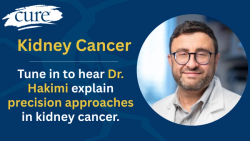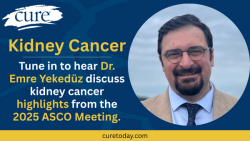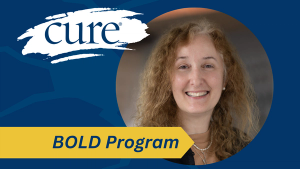Overview of Clear Cell RCC
Chung-Han Lee, M.D., provides background on clear cell renal cell carcinoma, including common symptoms and risk factors.
Chung-Han Lee, M.D.: Hello, and welcome to this is CURE Connections® video series titled “Advances in the Diagnosis and Treatment of Clear Cell Renal Cell Carcinoma.” I’m Dr. Chung-Han Lee. I’m a GU [genitourinary] medical oncologist from Memorial Sloan Kettering Cancer Center [in New York, New York], focused on improving outcomes for patients with kidney cancer. My work includes leading single-institute and multicenter international clinical trials to help develop novel treatments for patients with kidney cancer, and the investigation of correlative biomarkers to help physicians decide on the best treatment for their patients. Some of my work is funded by the Department of Defense through the CDMRP [Congressionally Directed Medical Research Programs] granting mechanism, which provides funding directed toward kidney cancer research.
In addition to my research, my passions include patient and physician advocacy and education for kidney cancer. Joining me in this discussion are a health care professional, a patient and a representative from a patient advocacy group. I’d like to welcome them to introduce themselves.
Kiran Virdee, R.N., BSN, CCRN: Hi, everyone. My name is Kiran Virdee. I’m a clinical nurse at Memorial Sloan Kettering Cancer Center in New York. I’ve been managing the care of patients with kidney cancer for the past 4 years, and I work alongside Dr. Lee.
Meryl Uranga: Hi. My name is Meryl Uranga. I live in Atlanta, Georgia. I’m a patient with metastatic stage IV kidney cancer. Next month, I’m coming up on a five-year milestone since my diagnosis. I’m treated at [Winship Cancer Institute of] Emory University by Dr. [Mehmet Asim] Bilen.
Bryan Lewis: Good afternoon. My name is Bryan Lewis. I’m the president of KidneyCAN, a research and patient advocacy organization with volunteers across the country. It’s a pleasure to be here on the CURE Connections® video series. Thank you for this opportunity.
Chung-Han Lee, M.D.: We’re going to discuss a variety of topics pertaining to advances in diagnosing, treating, and managing clear cell renal cell carcinoma. Let’s get started on our first topic, beginning with a brief overview of clear cell kidney cancer. Clear cell kidney cancer falls under a broader category of cancers of the kidney, with clear cell being the most common type of kidney cancer. In terms of frequency overall, kidney cancer is about the sixth to eighth most common [type of cancer], depending on gender, with clear cell kidney cancer making up about 70% to 80% of the kidney cancers out there.
It’s a male-predominant malignancy, with two-thirds to three-fourths of the patients being men, typically in their 50s to 70s at the time of initial diagnosis. Generally speaking, there’s not much family history related to this disease, unlike some other malignancies, where we often see genetic risk factors. That’s a little less common and a little less understood for kidney cancer, especially with the typical demographic. Other things that can be associated with the development of kidney cancer include smoking and obesity. However, these are only mild risk factors that contribute to the disease.
Typically speaking, kidney cancer diagnosis has evolved over the last several decades. Historically, we used to think of kidney cancer as a disease that was discovered from what we call the terrible triad, meaning blood in your urine, feeling a mass or having flank pain. Nowadays, because of the frequency in which we’re getting incidental imaging, whether it’s from back pain or a car accident, kidney cancer is often found in incidental imaging, where a large kidney mass is noted.
The general prognosis for people with kidney cancer has been in rapid flux over the last decade or so. We’ve seen significant advances in the outcomes for patients. Before about 2005, we saw very few people make it beyond a year with the disease. Now, based on research that’s been done, we’ve started seeing patients make it beyond four years. However, those are averages, and we don’t know which side of that average each individual patient may fall on. In terms of being diagnosed with metastatic disease, we’d typically talk about starting people on systemic therapy, medications taken by mouth or IV [intravenous] to treat and slow down the kidney cancer. Although we have a lot of promising new regimens for treatment, it’s too early to know how long these new regimens will last, given that they’re still quite new.
Transcript edited for clarity.
Related Content
 Palliative Care in Kidney Cancer More Than Just Relieving Symptoms
Palliative Care in Kidney Cancer More Than Just Relieving SymptomsSeptember 26th 2024
View additional resources on CureToday.com

















